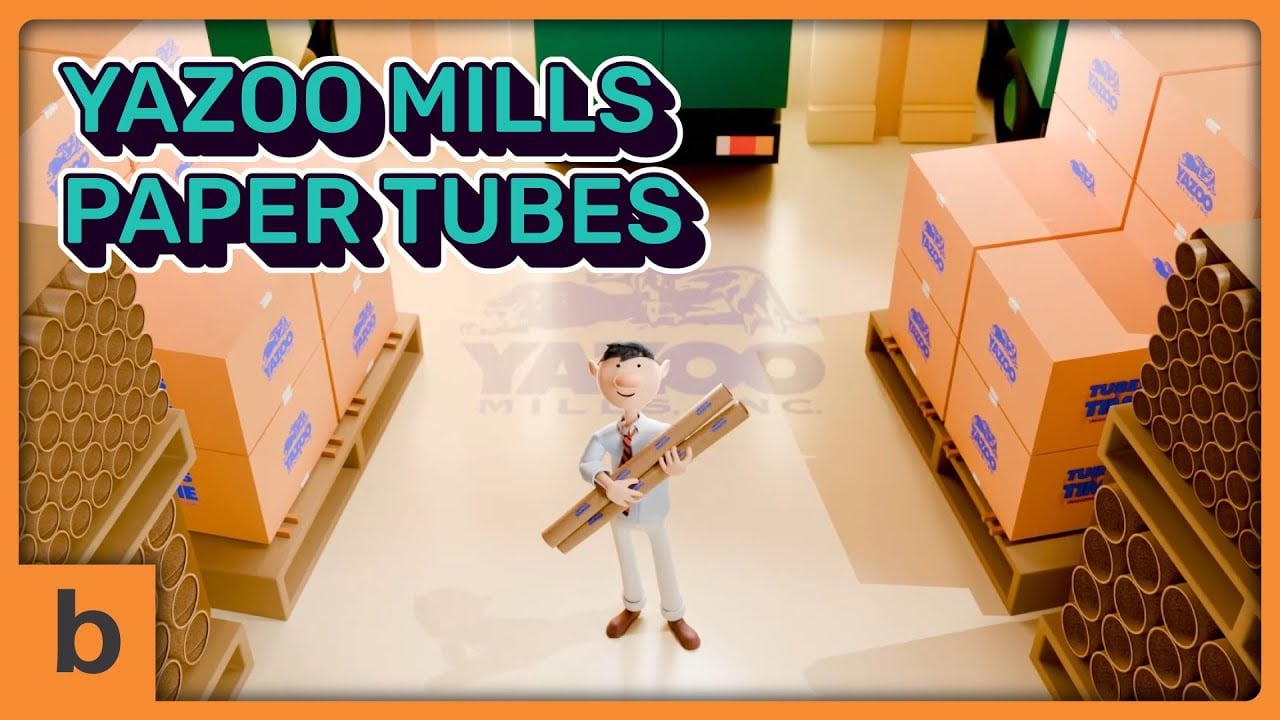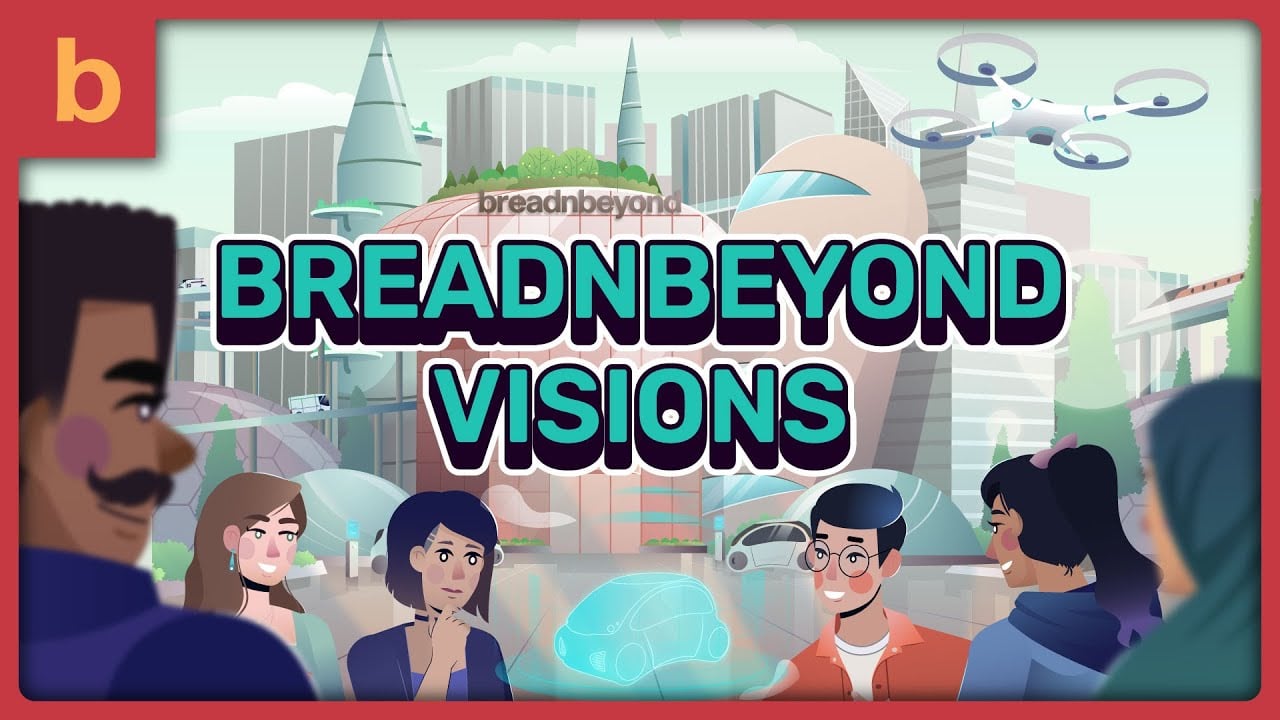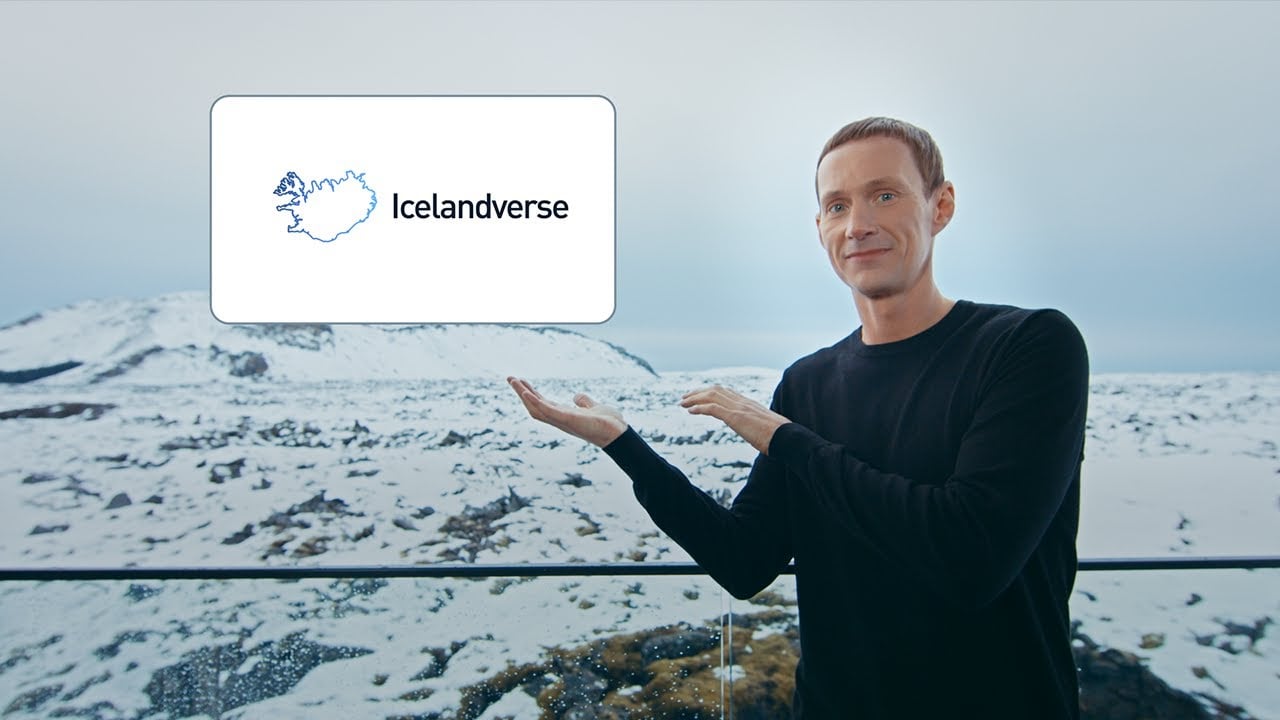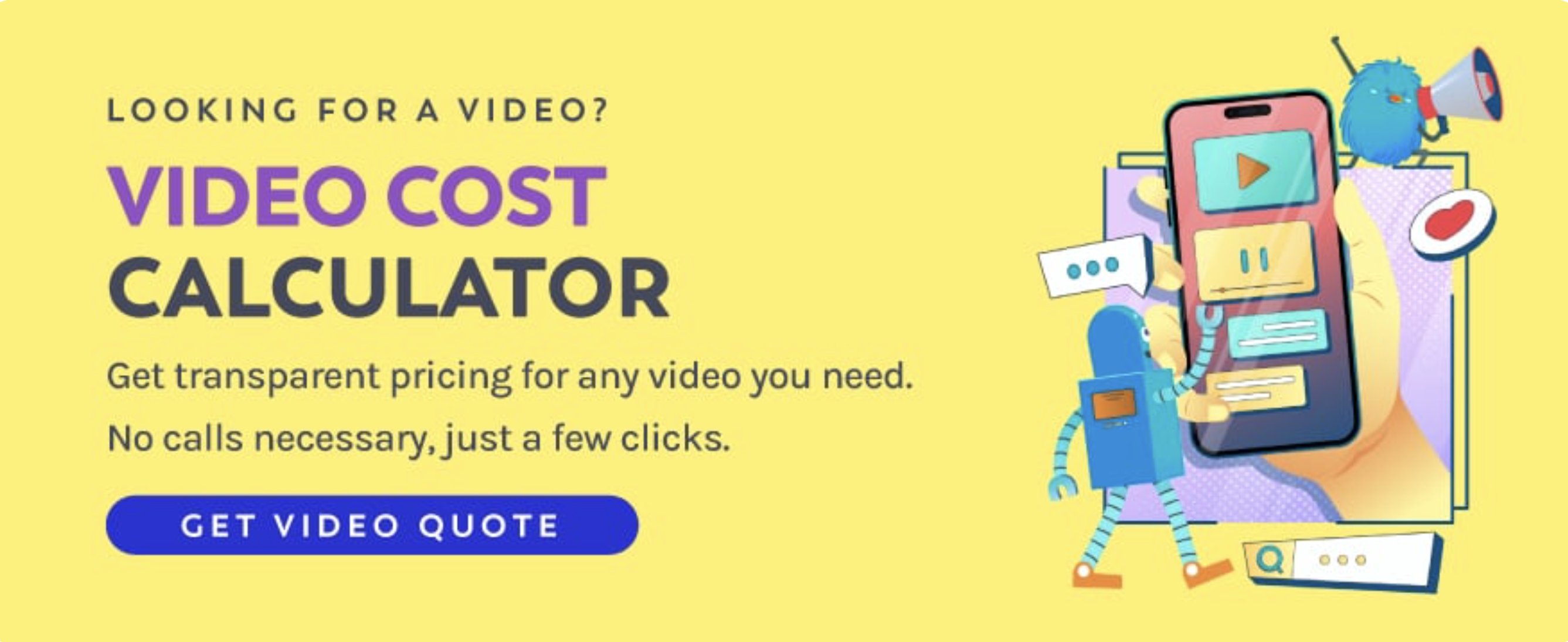Table of Contents ×
- 1 1. Skip the Monologue, Write a Storyboard with Narrative
- 2 2. Use 3D Animation for Clarity and Visual Punch
- 3 3. Don’t Use Generic Visuals or Templates
- 4 4. Incorporate On-Brand Humor
- 5 5. Avoid Static Shots, Use Motion and Visual Variety
- 6 6. Add Interactive Video Features (If Platform Supports It)
- 7 7. Pick Music and Voiceover That Match the Message
- 8 8. Respect the Viewer’s Time: Keep It Tight
- 9 9. End with a Real CTA, Not a Generic One
- 10 10. Create a Fully-Customized Video with Professionals
- 11 Say Goodbye to Boring Corporate Videos
Boring corporate videos are dull, lifeless production that relies on jargon, static visuals, and uninspired narration. They fail to capture attention or connect with their audience.
There are ways to make corporate videos more engaging, like using compelling narration, 3D animation, a touch of humor, or even interactive features.
We’ve worked with clients who came to us after trying the “safe” route, only to find their videos got ignored.
But after working with over 1,200 different clients, we’ve discovered some proven shortcuts to get things done, without making it cookie-cutter and boring.
When done right, a corporate video becomes more than just a box to check on your to-do list.
I’ll walk you through the biggest reasons corporate videos fall flat and what we do to help clients avoid those traps.
I’ve listed 10 proven ways to help you make your corporate video more engaging and actually worth watching, without overcomplicating the process.
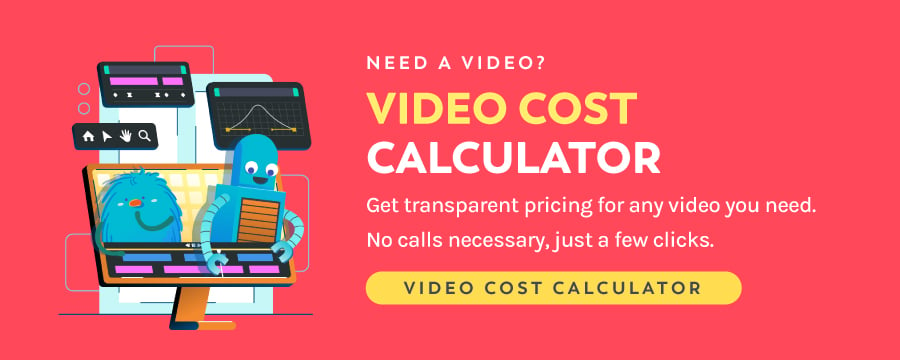
1. Skip the Monologue, Write a Storyboard with Narrative
I’ve seen too many corporate videos fall into the trap of sounding like a monotone voiceover listing company facts.
If you want to keep the audience engaged, ditch the corporate speech and focus on telling a story instead.
And that starts with a solid storyboard. Here’s an example produced by Breadnbeyond for one of our clients.
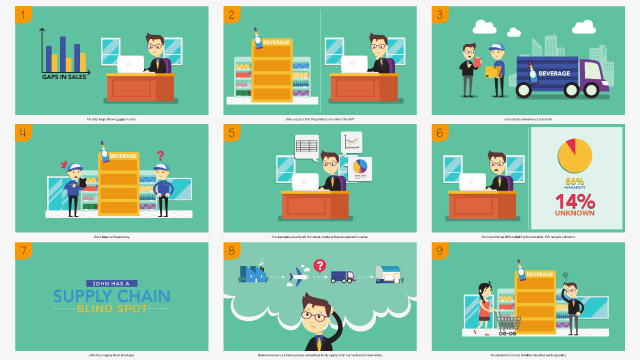
An example of a storyboard produced by Breadnbeyond.
A good storyboard maps out your video scene by scene, guiding the viewer through a mini-journey.
It helps you visualize the narrative before a single frame is animated or filmed.
While the classic “problem-solution” format works well, at Breadnbeyond, we often go further.
For example, showing a day in the life of your customer/employee, introducing your brand as a helpful guide, or starting with a fun “what if” scenario.
When your video has a clear story arc, with relatable characters and emotional beats, it creates momentum.
On the other hand, I get it if you’re wondering, “Is a storyline in an explainer video really that important?” or thinking, “Isn’t it just a nice-to-have?”
But according to HubSpot, nearly all marketers, 96% to be exact, believe that video storytelling helps people better understand a product or service.
So if you’re still on the fence, take this as a strong signal: there’s really no reason to skip the storyline.
2. Use 3D Animation for Clarity and Visual Punch
Not every concept works well on camera, and in many cases, it shouldn’t be attempted at all.
If your product lives in the digital space, like SaaS platforms, data dashboards, backend systems, or cloud-based services, traditional filming can fall flat.
How do you show a real-time data sync? Or explain the logic behind your algorithm? That’s where 3D animation steps in.
With 3D, we can bring abstract systems to life.
Many of our clients used it to simulate industrial machinery without needing a factory shoot, to visualize complex data flows between APIs and databases, and to guide users through multi-step software processes; clearly, cleanly, and without a single camera angle.
Here’s an example we’re especially proud of:
This video combines a clear storyline, seamless transitions, and sharp 3D visuals to turn a complex subject into something engaging and easy to digest.
No clutter. No confusion. Just crisp communication and sleek visuals.
Even simple 3D elements, like floating UI screens, animated dashboards, or virtual walkthroughs, can add a layer of clarity that filming alone can’t deliver.
According to Linearity (2023), 3D animation can increase viewer engagement by up to 30%.
Meanwhile, the Content Marketing Institute (2023) reports that 3D animation can boost conversion rates by as much as 20%.
3D animation is especially effective in industries where products are complex, abstract, or not easily filmed. Some common examples include:
- Tech & SaaS – to show how software, systems, or data flows work behind the scenes
- Healthcare – to visualize medical procedures, anatomy, or biotech tools
- Manufacturing – to simulate machines, product assembly, or factory workflows
- Finance & Crypto – to explain digital transactions, blockchain, or security layers
- Architecture & Real Estate – for virtual walkthroughs and 3D models of spaces
In these cases, 3D helps turn invisible or hard-to-film concepts into clear, engaging visuals.
And when you combine that with motion graphics, you get a polished, professional look that’s hard to ignore.
So if you’re explaining something users can’t physically touch or see, 3D might just be your best storyteller.
3. Don’t Use Generic Visuals or Templates
Stock and templates can be useful when you’re on a tight budget or timeline.
But if they dominate your video, it ends up looking just like everyone else’s.
You’ll often find these generic corporate animations on free animation platforms.
They’re built for speed, packed with ready-to-use templates, but hardly designed for storytelling.
Use customized visuals that reflect your story, your tone, your audience, and your brand.
This is our own corporate branding video:
Breadnbeyond has been producing explainer videos since 2009.
We create explainer videos from scratch, from the script to the visuals, to make sure it feels uniquely us and tells our story in a way no template ever could.
Even minor upgrades matter, like branded motion graphics, custom icon sets, or real footage from your workspace, which can instantly make your video feel more authentic.
Ideally, work with a video team that can create fully custom content to generate a fully customized animated marketing video.
4. Incorporate On-Brand Humor
Humor in a corporate video? I’d go for it!
In-brand humor isn’t about cracking jokes for the sake of it.
It’s when you inject personality in a way that feels natural to your company culture and audience expectations.
For instance, a fintech company might lean into dry, clever analogies, while a SaaS brand for creatives might use playful visuals or tongue-in-cheek narration.
The key is relevance and restraint. I also think of it as tone-appropriate wit.
It should support the message, not distract from it. Some humor techniques commonly used by corporations are:
- Visual irony – where the voiceover says one thing, but the visuals reveal a humorous twist
- Exaggeration – blowing up a relatable pain point (like endless tabs or error messages) to comic effect
- Understatement – where the humor is subtle and dry, adding personality without feeling over the top
Talking about in-brand humor, one of my favorite examples is Inspired by Iceland’s “Icelandverse” video.
A parody of Mark Zuckerberg’s Metaverse reveal.
They leaned into dry, straight-faced humor to contrast Iceland’s real-world beauty with the overly hyped digital future.
The humor was clever, perfectly timed, and completely in line with the brand.
The message? Iceland doesn’t need a virtual world. It’s already amazing in real life.
The key is tone. Keep it clever and charming, but never cringey.
That said, not every brand or subject matter calls for laughs. In regulated industries (like healthcare or insurance), humor can feel off-key.
However, if your brand already has a friendly or informal tone, don’t be afraid to convey it in your script, pacing, or animation style.
5. Avoid Static Shots, Use Motion and Visual Variety
One of the fastest ways to make a corporate video feel dull is to lock the camera in place and let it run.
Are you still wondering why? Well, viewers are conditioned by modern visual media to expect movement.
Not to forget that we all live in a highly dynamic content world, from TikTok to Netflix.
According to a study report on Sage Journals, the human brain is wired to respond more actively to changing visual stimuli, and when those visuals are paired with storytelling, the impact is even greater.
Storytelling-narrated videos not only capture attention but also improve short-term memory retention and help learners better understand complex concepts.
In short, we can say that when nothing changes on the screen, cognitive engagement slows down.
However, don’t confuse visual variety with visual chaos.
You don’t need whip pans or constant jump cuts to keep attention. In fact, subtlety often works better.
A slow push-in on a speaker, a shifting animated background, or soft parallax motion can add just enough life to keep the frame feeling “alive.”
These techniques help maintain visual momentum, a term cinematographers and editors often use to describe a scene’s forward motion, even when there is no actual plot movement.
For animated or motion graphics videos, consider:
- Layered transitions that guide the eye from one element to the next
- Animated infographics that evolve rather than appear statically
- On-screen text motion (kinetic typography) to emphasize key points
Expert editors often refer to this as visual choreography. Just like a good musical composition, your video should move in beats.
Each shift in visual style or camera angle acts like a note in a melody, keeping the viewer subconsciously engaged.
6. Add Interactive Video Features (If Platform Supports It)
Today’s video platforms offer much more than just play and pause.
If you’re using tools like YouTube, Vimeo, Wistia, or Vidyard, you can layer in interactive features—chapters, clickable CTAs, product hotspots, even branching paths.
These elements transform your video from a passive stream into an active experience.
We’ve used this approach in B2B explainer videos, embedding clickable sections that let viewers jump straight to a case study, explore pricing, or book a demo—all without leaving the player.
It’s a smart way to reduce friction and keep the viewer engaged in one focused environment.
From a production standpoint, interactive videos benefit from planning ahead during pre-production. For instance:
- Frame rate & resolution: Stick to 24 or 30 fps for most web content, and export at 1080p or 4K, depending on platform and interactivity needs.
- Compression: Use H.264 with a high bitrate (10–20 Mbps for 1080p, 30+ Mbps for 4K) to maintain clarity on clickable elements.
- Delivery format: MP4 is the standard, but for platforms like Wistia or Vidyard, JSON metadata may be used to trigger interactivity.
My team often uses Adobe Premiere Pro for editing and building interactive layers.
If you’re marketing on YouTube, consider YouTube Chapters and end-screen CTAs.
For more complex paths, third-party tools offer deeper customization.
For more complex paths and advanced customization, here are some third-party interactive video tools worth exploring:
- Wirewax – Enterprise-grade tool for adding clickable hotspots, branching scenes, and 360° interactivity. Ideal for immersive product demos and high-end brand content.
- Eko – Great for choose-your-own-path storytelling. Perfect for onboarding, training simulations, or narrative-driven explainer videos with viewer decision points.
- Vidyard (Advanced Plan) – Built for B2B. Offers in-video CTAs, lead capture forms, viewer tracking, and CRM integrations—great for sales, marketing, and onboarding.
- ThingLink – Ideal for creating interactive walkthroughs, product explainers, or virtual tours. It lets you add layer text, images, and video over visuals to create explorable experiences.
Even so, keep in mind that the best practice is not to overdo it. Use interaction sparingly, only when it adds value.
Too many clickable elements or cluttered overlays can overwhelm viewers and damage UX.
If you’ve done it right, an interactive video can be a high-performing asset.
It guides viewers, tracks intent, and can turn casual watchers into qualified leads with every click.

7. Pick Music and Voiceover That Match the Message
We’ve seen it before, a well-produced corporate video with sharp visuals, but something feels off. More often than not, it’s the audio.
Music and voiceover aren’t merely background. I would say they’re half the storytelling.
If done correctly, they support your message emotionally and psychologically.
So, in this part, I would divide the discussion into three parts: Background music, sound design, and voiceover.
Background Music: Set the Emotional Tone
Music acts as an emotional shortcut. According to research from Nielsen, viewers are more likely to remember a video and associate it positively when the soundtrack reinforces the intended emotion.
That means your audio shouldn’t only sound good, it must feel right.
We follow these general music pairings:
- Upbeat & rhythmic → product launches, promos, or company culture videos
- Calm & minimal → explainer videos, how-tos, and onboarding content
- Cinematic & atmospheric → brand vision, recruitment, or storytelling videos
When sourcing audio, royalty-free music platforms like PremiumBeat, Artlist, and Epidemic Sound offer high-quality tracks.
But let me give you one pro tip: Don’t just filter by mood—filter by instrument, pacing, and key signature.
The wrong tempo or instrumentation can completely shift how the message lands.
And always mind the mixing: Background music should complement, not overpower, the voiceover.
We use volume ducking to keep spoken content crystal clear.
Sound Design: The Hidden Layer Most People Skip
Beyond music, sound design can add dimension and realism.
Even subtle audio cues, like UI clicks, page swipes, or ambient whooshes, can help direct attention and add polish.
Sound design is often overlooked in corporate videos, but it plays a critical role in making animated or product-heavy scenes feel grounded and immersive.
It’s not that you add “noise” here, but it’s more about building an auditory experience that matches the visual pacing.
Voiceover: Talk To the Viewer, Not At Them
Your voiceover shouldn’t sound like someone reading a press release.
It should feel like a conversation—clear, natural, and emotionally in sync with your message.
If you have no experience in voice acting, I recommend hiring a professional narrator, just to make sure your message is well conveyed and delivered.
However, if you want to try to do it yourself or with your team, some best practices to keep in mind are:
- Matching your brand tone: Commonly, conversational and friendly for startups, formal and clear for B2B, while dynamic and upbeat for consumer brands.
- Using accents and inclusivity: Don’t be afraid to localize. We’ve used regional accents to reflect specific markets and connect more authentically.
It would take some time to experiment with this because you must master the essential skills of voice acting.
And here’s a critical tip many overlook: script for the ear, not the eye.
A sentence that looks great on paper may sound awkward when spoken aloud.
So, always read the script out loud before recording.
When voice, music, and sound design are in sync, your video informs and moves people.
It also builds trust, shapes perception, and gives your message emotional depth.
Don’t treat sound as an afterthought. It’s one of your most powerful storytelling tools.
8. Respect the Viewer’s Time: Keep It Tight
I’m not saying people have short attention spans, but I’m saying they have short patience for content that doesn’t get to the point.
One of the most common missteps in corporate video is trying to say everything at once: your origin story, every feature, testimonials, roadmap, and values. All crammed into a five-minute monologue.
Those five minutes end up feeling like fifteen.
Here’s our rule at Breadnbeyond: focus on one goal per video. Trim what’s not essential.
You’ll be surprised how much stronger the message hits when there’s no fluff in the way.
A tight 60–90 second video with flow and focus is often more powerful than a five-minute one that drags.
We’ve actually put together a quick case study on finding the ideal length for your video.
The quick breakdown of what we found looks like this:
- 30 seconds – Great for grabbing attention and teasing a solution without diving too deep.
- 60 seconds – The sweet spot for balanced storytelling. Ideal for videos that both educate and drive action.
- 90 seconds – Works well when you need more room to unpack complex topics while still holding attention.
- 2 minutes or more – Best suited for demos, training videos, or in-depth brand stories, especially when your audience already knows you and wants more detail.
If you want to read more details from the case study, head to our previous article here.
Ultimately, viewers appreciate it when you respect their time. And if you do, you’ll earn more of it, across channels, clicks, and future views.
9. End with a Real CTA, Not a Generic One
Corporate videos are created for all kinds of reasons: to introduce a product, onboard new employees, raise awareness, attract investors, train teams, or drive sales.
So your call to action (CTA) should reflect that specific purpose.
A generic “Visit our website to learn more” is great. But my question is: Will it drive you to your goals?
What I want to stress is that a strong video deserves a strong finish.
And that means giving your viewer a clear, actionable next step that aligns with what they just watched.
A quick CTA guide would look like this:
- Product demo or explainer video: “Book a free demo”, “Try it today—no credit card needed”
- Internal training or onboarding: “Access the next training module”, “Download your checklist”
- Recruitment or brand storytelling: “See our open roles”, “Explore our team culture”
- Investor-facing corporate overview: “View our latest financials”, “Schedule a call with our investor relations team.”
- Event recap or partnership announcement?“Join our next event”, “Reach out to collaborate”
One more thing to remember: The best CTAs are outcome-oriented and value-driven. Don’t just tell them what to do. Tell them why it benefits them.
Here’s an example from us:
If your story ended with a success story, invite them to start their own.
If you just walked them through a product feature, prompt them to try it.
In some cases, we weave the CTA into the voiceover rather than saving it for the end screen.
Now, beyond the wording, design, and placement also affect performance.
We’ve seen better click-through rates when:
- The CTA button or text appears during the emotional peak, not just at the end
- The design uses contrasting colors to stand out visually
- The message includes a soft time trigger (e.g., “Start now”, “Get instant access”)
Consider experimenting with interactive video tools (like Wistia, Vidyard, or Vimeo OTT) to embed clickable CTAs directly inside your video.
They reduce friction and keep your audience from dropping off between the video and the landing page.
We also compiled the most-used CTA designs to help you get inspiration.
10. Create a Fully-Customized Video with Professionals
If you want a video that doesn’t just look polished but actually works, get professionals involved.
DIY tools are great for small wins, but they often hit a ceiling quickly.
They mostly lack visual appeal, use templated scripts, and employ generic delivery.
Professionals come in handy when you need a video that captures your unique brand voice, like we did for NutriChew, where we crafted everything from a custom script to original visuals that made their product both irresistible and memorable.
I’ve seen how custom videos, planned and produced by a team of experienced creatives, can transform dry information into something engaging, innovative, and memorable.
With a professional team, everything is aligned with your goals, including the story, animation style, pacing, music, and message.
Say Goodbye to Boring Corporate Videos
At the core of every engaging corporate video are clarity, intention, and a bit of creative courage.
What I’m trying to say is that when your video feels human, when it respects the viewer’s time, speaks their language, and reflects your brand honestly, it will connect.
You don’t need to reinvent the wheel to make your video stand out.
Sometimes it’s as simple as replacing a stock scene with a custom animation, swapping a generic script for a relatable narrative, or ending with a CTA that actually feels human.
If your last video didn’t land, it’s a sign that your message was wrong. But that’s something you can absolutely improve next time.
And we can help with that.
At Breadnbeyond, we create fully customized animated corporate videos that look great and get results.
Whether you need a 3D product walkthrough, a slick explainer, or something totally out-of-the-box, our team is here to bring your story to life.
Take a look at our online portfolio and see what we can create together.


